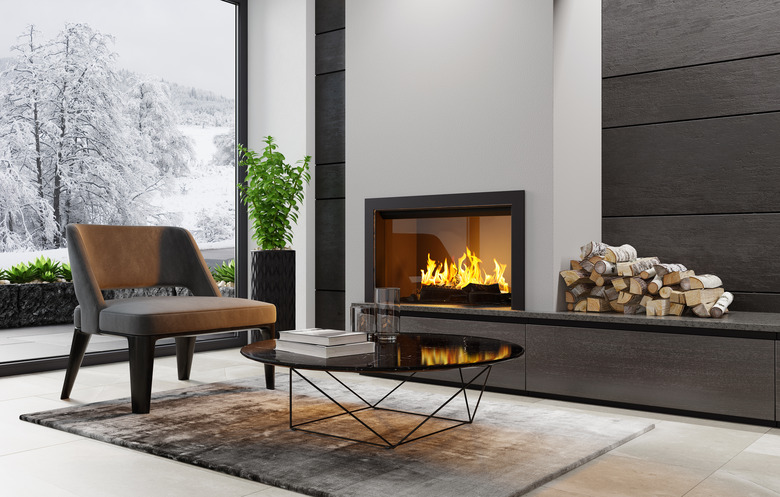Can Palo Verde Wood Be Used In An Indoor Fireplace?
We may receive a commission on purchases made from links.
Arizona's state tree, the palo verde tree, grows across the southwestern United States and is widely grown in landscaping for its feathery foliage and because it requires so little water. Although this beautiful tree can live 100 years — possibly even up to 400 years — it isn't sturdy. In fact, due to the fragile nature of the palo verde tree (its name is Spanish for "green stick"), the trees often fall in strong wind, leaving many homeowners with surplus wood. While palo verde wood can be burned outdoors with few problems, it possesses several traits that make it undesirable for use in an indoor fireplace.
Tip
Although palo verde wood can be burned outdoors with no problem, several issues make using it in your indoor fireplace actually not a good idea.
Palo Verde Burning Speed
Palo Verde Burning Speed
Palo verde wood has a porous structure with a weak central core, so it cannot sustain heat for a long period of time. The speed with which it burns makes it less useful as firewood since it provides heat for a limited time and requires frequent replenishing. While it can be used successfully as kindling since it catches fire quickly, there are other factors that make palo verde wood definitely unsuitable for indoor use.
An Unpleasant Odor
An Unpleasant Odor
Fresh palo verde wood emits a subtly fruity scent that turns sour and unpleasant when the wood is burned. The odor of burning palo verde wood has a lingering quality that can be difficult to remove from fabric and that can persist for days in an enclosed environment. In addition, the pungency of the smell induces headaches and allergies in many people, so burning it should be avoided in an indoor environment.
Lack of Coal Formation
Lack of Coal Formation
Coal formation is the result of pyrolysis, also known as thermal decomposition. It occurs during a sustained period of burning during which the intense heat surrounding the fuel robs the surrounding air of oxygen, causing the wood to break down into carbon. Most firewood undergoes pyrolysis to produce the glowing coals characteristic of a successful fire. However, palo verde wood cannot produce coals due to its porous structure and light weight, which burns too rapidly to successfully undergo pyrolysis. A lack of coals means that a fire comprised of palo verde wood will not produce adequate heat and is therefore of little use within an indoor fireplace.
Safety Issues to Consider
Safety Issues to Consider
The crackling sound you hear when wood burns is normal, but palo verde wood pops and crackles more than most. The sound is produced as the interior of the wood heats and the hot air is expelled through the outer layer of the wood. Palo verde wood possesses a very weak structure, so the natural popping noise is often accompanied by a burst of embers as the wood splinters. In an indoor fireplace, the expelled embers can quickly pose a serious safety hazard since they can easily land on nearby flammable surfaces such as carpets or furniture and cause a fire.
